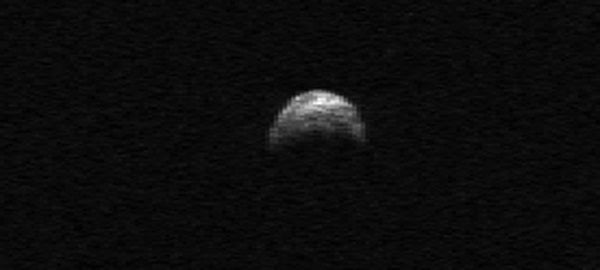A near-Earth asteroid named 2005 YU55 — on the list of potentially dangerous asteroids — was observed with the Arecibo Observatory’s planetary radar April 19 when it was about 1.5 million miles (2.4 million kilometers) from Earth, which is about 6 times the distance to the Moon, according to Michael Nolan, director of the Arecibo Observatory. The Arecibo telescope is located in Arecibo, Puerto Rico, and it is managed by Cornell University on behalf of the National Science Foundation.
Arecibo radar imaging of 2005 YU55 at 25-foot resolution showed that the asteroid is about 1,300 feet (400 meters) in size — about a quarter-mile long — and about twice as large as previously estimated.
This object is on the list of potentially hazardous asteroids maintained by the Minor Planet Center of the Harvard-Smithsonian Center for Astrophysics, Cambridge, Massachusetts.
High-precision radar astrometry reduced orbit uncertainties by 50 percent. This improvement eliminated any possibility of an impact with Earth for the next 100 years, so the asteroid was removed from the risk page maintained by NASA’s Near-Earth Object Program Office at the Jet Propulsion Laboratory.
After circling the Sun, 2005 YU55 next will approach Earth to about 0.8 lunar distances November 8, 2011. It will pose no impact hazard at that time. Robert McMillan of the Spacewatch asteroid detection program discovered the asteroid December 28, 2005.
President Barack Obama has proposed that NASA’s Near Earth Object Program be increased from $3.7 million in 2009 to $20.3 million in 2011. NASA has indicated that it intends to provide support to the Arecibo radar program if that funding remains in the budget.










